dividend-yielding stocks
description: stocks that pay dividends on a regular basis, often appealing to investors looking for current income in addition to capital growth.
14 results
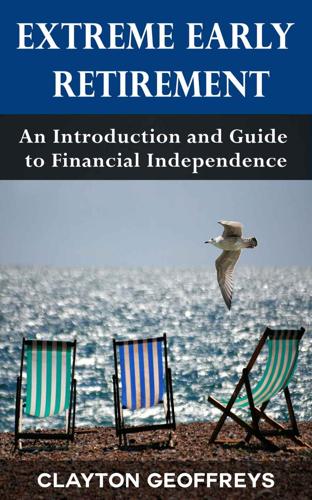
Extreme Early Retirement: An Introduction and Guide to Financial Independence (Retirement Books)
by
Clayton Geoffreys
Published 16 May 2015
There is another method which you can live with and it is through generating passive income. Throughout the next pages, you will be learning more about passive income but the basic idea is to couple your active income with various sources of passive income. Two of the most common sources that early retirees can live with are dividend-yielding stocks and rental properties. However, every source of passive income requires an investment and nearly all kinds of investments involve risk. It is important for you to calculate your risk tolerances and consider safer options so you do not end up burning your savings. 5 Reasons You Should Consider Extreme Early Retirement You Will Have More Time Enjoying the Goodness in Life The average age when people retire is 65 or 70, and if you think about it, people spend more time working instead of living.
…
Your Money Works for You and Not the Other Way Around This is the main subject matter that everyone wants to talk about when it comes to extreme early retirement. It is not easy to achieve, but with a little patience and time spent on learning, you can establish ways to make your money work for you. Early retirees are known to come up with ways of generating passive income apart from their active income. As mentioned earlier, dividend-yielding stocks and rental properties are two of the primary sources of income that early retirees spend most of their investment funds into. There are even some retirees who rely entirely on their rental properties as a source of passive income. Ideally, this is the kind of life everyone might want and although you are not necessarily ‘working’ for it, there is still some work involved but not as much as a regular day job would require.
…
However, there is still some more work and risks involved when you are investing in rental properties such as the property’s cost and expenses, the rate of return from your investment, and the financial risks involved from owning the property. The risks we are talking about here are usually that of the damages you may incur from your tenants, the probability of missing payment schedules or rental fees, and the untimely lack of a market for your property. Another interesting source of passive income is that of dividend-yielding stocks because you obtain significant return at regular periods or intervals. The good thing about it is that you are not dragged into any kind of activity other than the opening stages of your investment. Apparently, the slightly complicated part of this type of investment is deciding on which stock to choose.
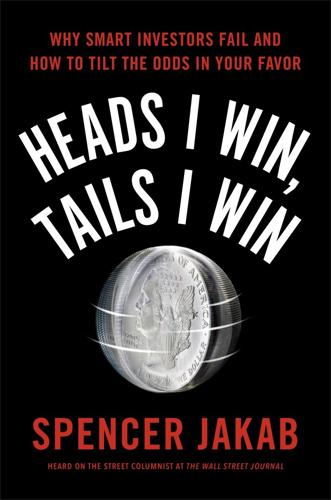
Heads I Win, Tails I Win
by
Spencer Jakab
Published 21 Jun 2016
There are exchange-traded funds that buy spin-offs exclusively, and an index tracking their performance has existed since December 2006. As of this writing it has appreciated nearly 94 percent compared to just 50 percent for the broad stock market. Another long-running, well-known, yet still successful way to profit from what’s out of favor on Wall Street is to buy the “Dogs of the Dow” each January—the ten highest dividend-yielding stocks among the thirty Dow Jones Industrials. These were usually relatively poor performers in the previous year, allowing their dividend yields to rise (as price falls, yield rises as long as payouts are unchanged). Such a strategy pursued over forty-six years produced nearly three percentage points of excess return compared to the index alone.
…
: Or, A Good Hard Look at Wall Street (Schwed), 149–50 You Can Be a Stock Market Genius (Greenblatt), 192 Brandes Institute, 194–95 Bridgewater Associates, 172 brokerage accounts/firms, 2, 19, 23, 32, 56, 83, 143, 196–97, 207, 209–11, 216–17, 228, 257 Brown Brothers Harriman, 90 Buckingham, John, 128–29 Buffett, Warren, 3, 30, 160 advice of, 34, 157–58, 161–62, 235–36 and bet with Seides, 171, 174–75 criticizes hedge funds, 169–71 and Graham-and-Doddsville, 218–19, 223 inspired by Graham, 194, 218–19, 232 and value investing, 113, 157–58, 220 bull market, 32, 38, 42–43, 46, 51–52, 55–61, 70, 75, 88, 90–92, 117, 124, 149, 214 Bureau of Economic Analysis, 57 Burns Advisory Group, 151 BusinessWeek, 126, 144, 213, 238 CalPERS, 186–87 Capital Decimation Partners, 164, 168, 172 Carlson, Ben, 30–31, 44, 61 CGM Focus Fund, 111 Charles Schwab, 83 Chicago Board Options Exchange (CBOE), 239–40 Clipper Fund, 105 Cohen, Abby Joseph, 128 Columbia University, 108, 217–18 commissions, 18, 135, 156, 181, 197, 202, 209, 211, 217 commodity investing, 73, 81, 205–6, 251 compound annual return, 19, 52–54, 64, 67, 95, 111, 219 average return, 75–76, 110 interest, 2, 4, 14, 30–31, 44, 91 contango phenomenon, 205–6 Cook, Michael, 154 Countrywide Financial, 109 Courtney, Tim, 150–52 Cramer, Jim, 118, 128 crashes, 76, 234, 242 of 1929, 39, 51, 54, 92–93, 123–24, 232–33, 236, 238, 240–41, 243 of 1973–74, 75, 237 of 1987, 33, 39–40, 51, 125–26, 233, 236, 240–41 of 1998, 33, 166–67, 238 of 2008, 33, 40, 47, 50, 61, 84, 126, 174–75, 236, 239, 241–42 Credit Suisse, 181 CXO Advisory Group, 128–29 cyclically adjusted P/E (CAPE), 92–95 Dalbar, 13–14, 16, 32–33, 37, 74 decision markets, 146 DiMaggio, Joe, 98, 102, 104 Direxion Daily Small Cap Bull & Bear 3x ETF, 204 dividend investing, 54, 216–17, 226–29 Dodd, David, 194, 218–19 dot-com boom, 132, 179, 186, 193, 195, 237, 242 Dow Jones Industrials, 42, 251 beating it, 219 dividend-yielding stocks of, 192 drops in, 33, 45, 52, 125–26 increases in, 46, 88 and mutual funds, 152 predictions of, 121, 123–26 Dreman, David, 128–29 Drudge Report, The, 46–47 Eastman Kodak, 101, 109 economic contractions, 50, 52–54 growth, 49, 52, 57, 71 recessions, 47–52, 56–58, 143–44, 232 statistics, 57, 59–60 Economist, 30 efficient market theory, 98, 108, 112, 146, 149, 158, 219, 225 Einhorn, David, 173 Einstein, Albert, 30, 44 Elliott, Ralph Nelson, 124 emerging markets, 83, 86, 135, 187, 238 emotional investing, 18, 21, 180, 200, 223, 234–36, 249–50 Employee Benefit Research Institute, 80 endowments, 81–82, 174, 187 energy companies/stocks, 100, 104, 109, 200.
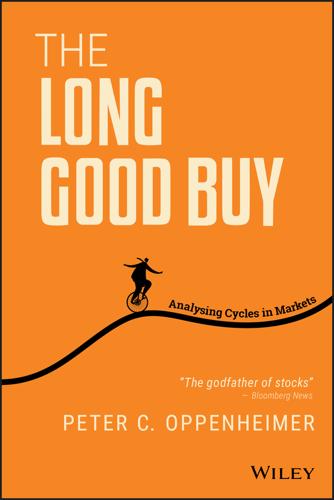
The Long Good Buy: Analysing Cycles in Markets
by
Peter Oppenheimer
Published 3 May 2020
Although not all growth stocks outperformed value in Japan's case (the broad growth versus value indices show clear underperformance of growth in Japan right up until 2007/2008), there appear to be some specific reasons for this. First, the lack of yield in both the bond and equity markets in Japan made high dividend yield stocks more attractive than they have been in most other markets since 2007 and, second, relatively few companies in Japan were seen as shareholder friendly, so paying a dividend was a good sign of this attribute. Third, the performance of the growth and value factors in Japan in the past 20 to 30 years has been similar to the performance of those factors globally, while value was outperforming in the rest of the world in the early/mid-1990s.
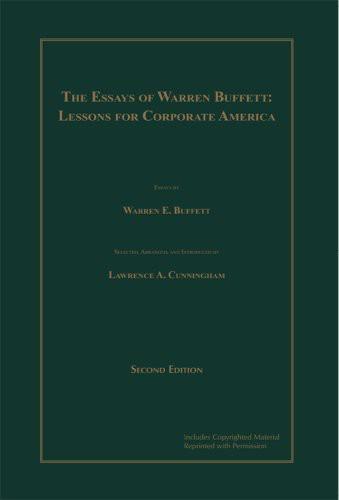
The Essays of Warren Buffett: Lessons for Corporate America
by
Warren E. Buffett
and
Lawrence A. Cunningham
Published 2 Jan 1997
It nevertheless had a silver lining: it shattered the modern finance story being told in business and law schools and faithfully being followed by many on Wall Street. Ensuing market volatility could not be explained by modern finance theory, nor could mountainous other phenomena relating to the behavior of small capitalization stocks, high dividend-yield stocks, and stocks with low price-earnings ratios. Growing numbers of skeptics 1997] THE ESSAYS OF WARREN BUFFETT 13 emerged to say that beta does not really measure the investment risk that matters, and that capital markets are really not efficient enough to make beta meaningful anyway. In stirring up the discussion, people started noticing Buffett's record of successful investing and calling for a return to the Graham-Dodd approach to investing and business.

The Investopedia Guide to Wall Speak: The Terms You Need to Know to Talk Like Cramer, Think Like Soros, and Buy Like Buffett
by
Jack (edited By) Guinan
Published 27 Jul 2009
The Investopedia Guide to Wall Speak 315 Investopedia explains Value Stock A value investor believes that the stock market is often inefficient and that it is possible to find companies trading for less than what they actually may be worth. One popular way to identify value stocks is to check the “Dogs of the Dow” investing strategy: buying one of the 10 highest dividend-yielding stocks on the Dow Jones at the beginning of each year and adjusting it every year thereafter. Related Terms: • Earnings • Price-to-Book Ratio—P/B Ratio • Value Investing • Growth Stock • Style Variable Cost What Does Variable Cost Mean? A cost that changes in proportion to a change in a company’s activity or business.

The Missing Billionaires: A Guide to Better Financial Decisions
by
Victor Haghani
and
James White
Published 27 Aug 2023
Over time, the number of factors that attract investor attention has grown dramatically. These are the most popular choices of factors expected to enhance the quality of portfolio return as suggested by the number and size of funds set up to focus on them: Value—stocks with low price/book ratios Size—small company stocks Dividend yield—stocks with high dividend yield, or high dividend growth Quality—stocks with high profitability and/or conservative investment Momentum—stocks that have outperformed the market over the past year Low volatility—stocks with low historical volatility or low beta We believe the prime reason investors seek factor exposure is to earn higher Risk‐adjusted Returns than the market‐cap‐weighted index.

Stocks for the Long Run, 4th Edition: The Definitive Guide to Financial Market Returns & Long Term Investment Strategies
by
Jeremy J. Siegel
Published 18 Dec 2007
., New York: McGraw-Hill, 2003. 11 146 PART 2 Valuation, Style Investing, and Global Markets FIGURE 9–2 Historical Analysis of the S&P 500 Index, 1957 to 2006 ber 1957, she would have accumulated $176,134 by the end of 2006, for an annual return of 11.13 percent. An identical investment in the 100 highest dividend yielders accumulated to over $675,000, with a return of 14.22 percent. The highest dividend yielders also had a beta below unity, indicating these stocks were more stable over market cycles, as shown in Table 9-2. The lowest-dividend-yielding stocks not only had the lowest return but also the highest beta. The annual return of the 100 highest dividend yielders in the S&P 500 Index over the past 50 years was 3.78 percentage points per year above what would have been predicted by the efficient markets model while the return of the 100 lowest dividend yielders would have had a return that was 1.68 percentage points per year lower.

Commodity Trading Advisors: Risk, Performance Analysis, and Selection
by
Greg N. Gregoriou
,
Vassilios Karavas
,
François-Serge Lhabitant
and
Fabrice Douglas Rouah
Published 23 Sep 2004
The equation for the market model is: rt = a + b1Mktt + b2SMBt + b3UMDt + b4HDMZDt + et (6.1) where rt = CTA index return in excess of the 13-week T-Bill rate, Mktt = excess return on the portfolio obtained by averaging the returns of the Fama and French (1993) size and book-tomarket portfolios SMBt = the factor-mimicking portfolio for size (“Small Minus Big”) UMDt = the factor-mimicking portfolio for the momentum effect (“Up Minus Down”) HDMZDt = difference between equally weighted monthly returns of the top 30 percent quantile stocks ranked by dividend yields and of the zero-dividend yield stocks (“High Dividend Minus Low Dividend”). Factors are extracted from French’s web site (http://mba.tuck.dartmouth. edu/pages/faculty/ken.french/data_library.html). Table 6.4 summarizes the results of this regression over the entire period and the four subperiods. For all but one subperiod (Weak Bull), the adjusted R-squared coefficients are extremely low and often negative.
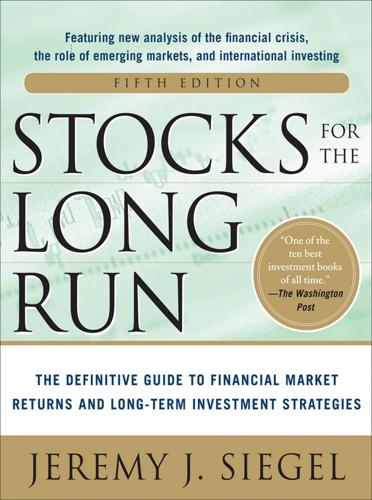
Stocks for the Long Run 5/E: the Definitive Guide to Financial Market Returns & Long-Term Investment Strategies
by
Jeremy Siegel
Published 7 Jan 2014
An identical investment in the 100 highest dividend yielders accumulated to over $678,000, with a return of 12.58 percent. The highest dividend yielders also had a beta below 1, indicating these stocks were more stable over market cycles, as shown in Table 12-3. TABLE 12-3 Return on S&P 500 Stocks Ranked by Dividend Yield, 1957-2012 The lowest-dividend-yielding stocks not only had the lowest return but also the highest beta. The annual return of the 100 highest dividend yielders in the S&P 500 Index since the index was founded in 1957 was 3.42 percentage points per year above what would have been predicted by the efficient market model, while the return of the 100 lowest dividend yielders would have had a return that was 2.58 percentage points per year lower.
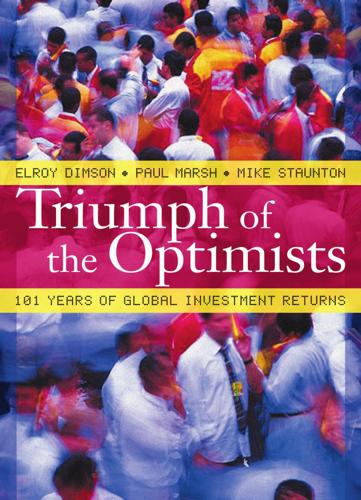
Triumph of the Optimists: 101 Years of Global Investment Returns
by
Elroy Dimson
,
Paul Marsh
and
Mike Staunton
Published 3 Feb 2002
The performance of the overall market is somewhat closer to growth than to value, standing at £16,160. This reflects the historical tendency of smaller UK companies to have a value orientation, and of large UK companies to have a growth orientation. Over the 101 years covered by the chart, the annualized return on the value index (containing high dividend yield stocks) is 11.5 percent, while the annualized return on the growth index (containing stocks with a low dividend yield) is 8.6 percent. The annualized value-growth premium over the 101 years is 2.7 percent. Over the long term, the historical record of value investing has been positive in the United Kingdom as well as the United States.
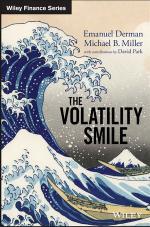
The Volatility Smile
by
Emanuel Derman,Michael B.Miller
Published 6 Sep 2016
See also Transaction costs Cox, John, 166 Cox-Ross-Rubinstein (CRR) convention: in binomial local volatility models, 252–253 in binomial models, 229–231 local vs. implied volatility in, 258–259 and time-dependent deterministic volatility, 242–243 Credit default swaps, 64 Crepey, Stephane, 307, 308, 317 Currency crisis of 1998, 2 Delta (Δ): and convexity, 49–50 defined, 46 Heaviside and Dirac delta functions, 190–191 of hedge ratios, 291 implied volatility as function of, 137–138 of lookback calls, 297, 300–301 sticky delta rule, 311–315 and strike, 141–143 and volatility smile, 140–143 Delta-hedged portfolios: as bet on variance, 64 defined, 47 Index hedging error in, 110–111 profit and loss with, 101 Demeterfi, Kresimir, 80 Derivatives: as non-independent securities, 35 relative valuation for, 12 Derman, Emanuel, 268 Diffusion, jumps plus, 395–398 Diffusion speed, in implied volatility, 285 Digital European call options, 171–173 Dilution, as risk management strategy, 27 Dirac, Paul, 6 Dirac delta functions: in static replication, 190–191 in stochastic volatility models, 328 Discrete hedging, 105–116 and accurate replication, 115–116 example of, 114–115 hedging error in, 110–114 Monte Carlo simulation for, 105–110 Discrete random variables, 252n.2 Diversification: for jump risk, 397 limitations of, 32 as risk management strategy, 31 Dividends, random, 396 Dividend yield: stock with continuous known, 240–242 zero, in Black-Scholes-Merton model, 237–238 Dominant index paths, 299–300 Down-and-out barrier options, 293f with nonzero riskless rate, 211–212 static hedge for, 212–214 with zero riskless rate and zero dividend yield, 207–211 Drift: in jump-diffusion models, 398–399 in jump modeling, 389 in stochastic volatility models, 349–350, 364–365 Dupire’s equation, 265–277 binomial derivation of, 270–275 formal proof of, 275–277 for local volatility models, 265–270 Dynamic hedging, 64, 204 Dynamic replication, 44–52, 53f and convexity, 49–50 defined, 16 for hedging options, 52, 53f 503 implied vs. realized volatility in, 50–51 notation for implied variables, 51–52 simplified explanation of, 44–49 Efficient market hypothesis (EMH), 17–18 Einstein, Albert, 417 Enterprise value, 165–166 Equities: and enterprise value, 165–166 volatility smile in individual, 148–149 Equity indexes: emergence of smile in, 4–5 jumps in, 383 local volatility model for, 307–308 volatility smile in, 144–148, 375 Error(s): in discrete hedging, 110–114 in replication, 81–82, 219 Euclid, 6 Euler’s equation, 355 European down-and-out call, 42–44 European options: Merton inequalities for, 154–158 sticky delta rule for, 313 value of, 37–38 volatility sensitivity of, 57–58 European up-and-in puts with barrier equal to strike, 206–207 Exact static replication, 37–42 Exotic options: in local volatility models, 292–301 replicating, 187–190 replicating, with vanilla options, 192–194, 195f–196f, 197 valuing, with smile models, 171–173 Fama, Eugene, 18 Financial crisis of 2007-2008, 1–2 Financial engineering, 7–8 challenges of, 417 mathematical finance vs., 5–6 role of, in financial crisis of 2007-2008, 1–2 Financial models, 1–12 Black-Scholes-Merton model, 2–3 and implied volatility smile, 3–5 inherent problems of, 417 purpose of, 8–12 in replication valuation, 15 and theory, 5–8 504 Financial theory, 5–8 Fisk-Stratonovich integral, 424, 427 Foreign exchange (FX) options: jumps in, 383 volatility smile in, 149–150 Formal proof, of Dupire’s equation, 275–277 Forward approach, to stochastic integration, 425–426 Forward integrals, 427–429 Forward Itô integrals, 92–93 Forward numerical integration, 423–424 Forward rates, 260–261 Frequentist probabilities, 19–20 Future expectations, and current values, 51 Future volatility: in Black-Scholes-Merton formula, 131 hedged option strategies as bet on, 89 FX options, see Foreign exchange (FX) options Gains, from convexity, 52.
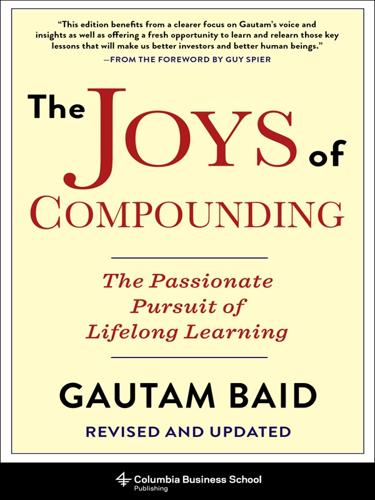
The Joys of Compounding: The Passionate Pursuit of Lifelong Learning, Revised and Updated
by
Gautam Baid
Published 1 Jun 2020
Think about this before you jump in to buy. Avoid investing in melting ice cubes. What appears to be cheap or relatively inexpensive can continue becoming cheaper if industry headwinds intensify. An irrational fall in price makes a stock cheaper. A rational fall in price makes a stock more expensive. Many of the high dividend-yield stocks in expensive markets eventually turn out to be value traps and destroy wealth. When you see a deep value stock suddenly break down on high volumes with no visible explanation, take notice. You are likely observing a value trap. Value traps are businesses that look cheap but actually are expensive.
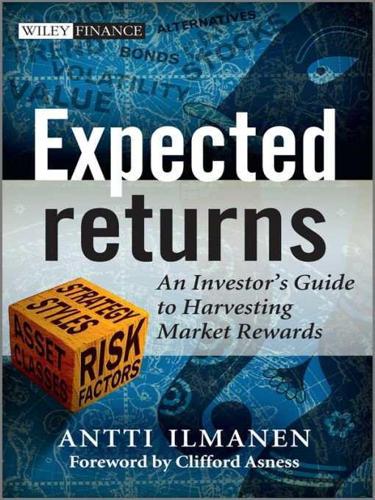
Expected Returns: An Investor's Guide to Harvesting Market Rewards
by
Antti Ilmanen
Published 4 Apr 2011
Active strategies that involve high turnover are less tax efficient than passive strategies that delay taxation. • Changes in tax laws over time can influence absolute and relative pricing. Falling tax rates from the 1980s to the 2000s contributed to rising equity market valuations, while the dividend tax cut in 2003 boosted demand for high-dividend-yield stocks. • Mortgage interest rate deductibility influences both bond and real estate pricing. The yield spreads of mortgages and corporates vs. Treasuries partly reflect differential (state and local) tax treatment. Tax-loss selling contributes to turn-of-the-year and January effects. 28.6 NOTES [1] Clearly, the riskiness of individual investments is not well captured by standalone volatility, which ignores their diversification abilities and timing of losses.

God's Bankers: A History of Money and Power at the Vatican
by
Gerald Posner
Published 3 Feb 2015
The IOR’s assets were not at risk, Caloia said, because under his nearly nineteen-year tenure the bank had never participated in stock options, much less derivatives (highly leveraged financial instruments). He did not disclose precise numbers, but indicated a recent press report concluding that the IOR’s unadventurous investment philosophy meant 80 percent of its assets were in low-yield AAA government bonds and the rest in a mixture of gold and dividend-yielding stocks, sounded about right.7 The Vatican Bank did not issue loans so it was not facing customers unable to make repayments.I Instead, Caloia noted the bank adhered to conservative investments that were “clear, simple and ethically based.” The IOR did not profit, he emphasized, from any dishonorable endeavor such as trading in international armaments.